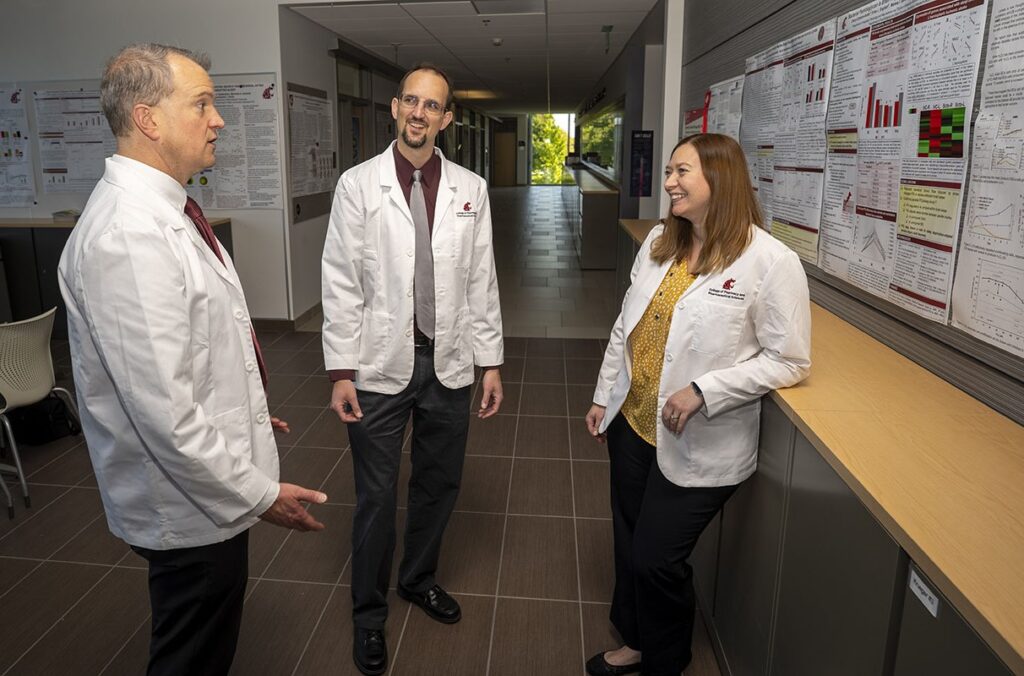
Pharmacy Quality Improvement Photoshoot
An estimated 90% of patients receiving home health care experience discrepancies between their medication lists and the medications they actually take, significantly increasing their risk of hospitalization. A pioneering initiative by Washington State University (WSU) has successfully addressed this issue, reducing hospitalizations of high-risk heart failure patients by more than half over a 10-week period at a Spokane home health care agency.
The project, which began in late 2018, was designed to help nurses and other in-home clinicians “think like a pharmacist” when reviewing medication lists. It involved interdisciplinary teamwork, training in reconciling and evaluating medication lists, and the implementation of a new tool to ensure electronic records across different providers are consistent and updated.
Addressing a Critical Gap in Home Health Care
According to Jeffrey Clark, an associate professor in the College of Pharmacy and Pharmaceutical Sciences at WSU, the absence of pharmacists in home health-care settings is a significant gap. “When you go to the hospital, a nursing home, or an urgent care facility, you often have a clinical pharmacist involved in care,” Clark explained. “Home health-care agencies don’t have that.”
The problem of “unreconciled” medication lists is particularly pronounced among patients treated at home. Past studies have shown that patients with unreconciled medications are more than twice as likely to be hospitalized. These patients often juggle multiple medications prescribed by various healthcare providers, leading to inconsistent records and varied adherence to medication lists.
Implementing Best Practices Through Interdisciplinary Collaboration
The WSU project was part of a nationwide Learning Action Network through the Institute of Healthcare Improvement, focusing on medication optimization. Professors Kimberly McKeirnan and Brian Gates, both co-authors of the study, worked alongside Clark to develop a pharmacist-led interdisciplinary team. This team created training sessions and a new reconciliation tool, a detailed checklist based on 13 scenarios where medication lists might be unreconciled.
“Best practices suggest medication reconciliation cannot stop with merely matching up the medication list with what the patient is taking,” Clark noted. “We trained clinicians to think like a pharmacist by streamlining the reconciliation process and providing medication evaluation.”
During a 10-week period after training, hospitalizations of high-risk heart failure patients were reduced from 23.4% to 11.4%.
Real-World Impact and Future Implications
The project’s results were particularly significant for patients with two or more unreconciled medications, who were initially three times more likely to be hospitalized within 30 days. Over 17 months, the initiative also achieved a sustainable reduction in rehospitalizations from 13.55% to 11.9% among all patients.
“This directly affects people in the Spokane area,” Clark emphasized. “Our land-grant mission at WSU is about service to the public and engagement with the community. By keeping people out of the hospital who don’t need to be there, we are fulfilling that mission.”
The initiative was supported by a grant from Pfizer, highlighting the potential for similar projects to be adopted more broadly. As the healthcare industry continues to grapple with the challenges of medication reconciliation, WSU’s project serves as a model for integrating pharmacists into home health-care teams to improve patient outcomes.
Looking Ahead: Expanding the Model
The success of the WSU initiative underscores the transformative impact of embedding pharmacists in care teams. As healthcare systems strive to reduce hospitalizations and improve patient care, the lessons learned from this project could inform future efforts nationwide.
Moving forward, expanding this model could involve further collaboration with healthcare providers and policymakers to ensure that home health-care agencies have the resources and support needed to implement similar programs. The ultimate goal is to enhance patient safety and reduce hospitalizations through effective medication management.




